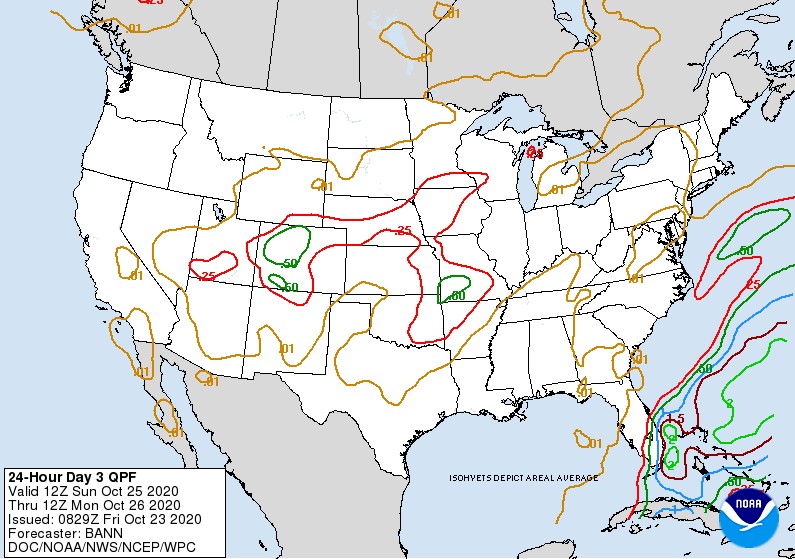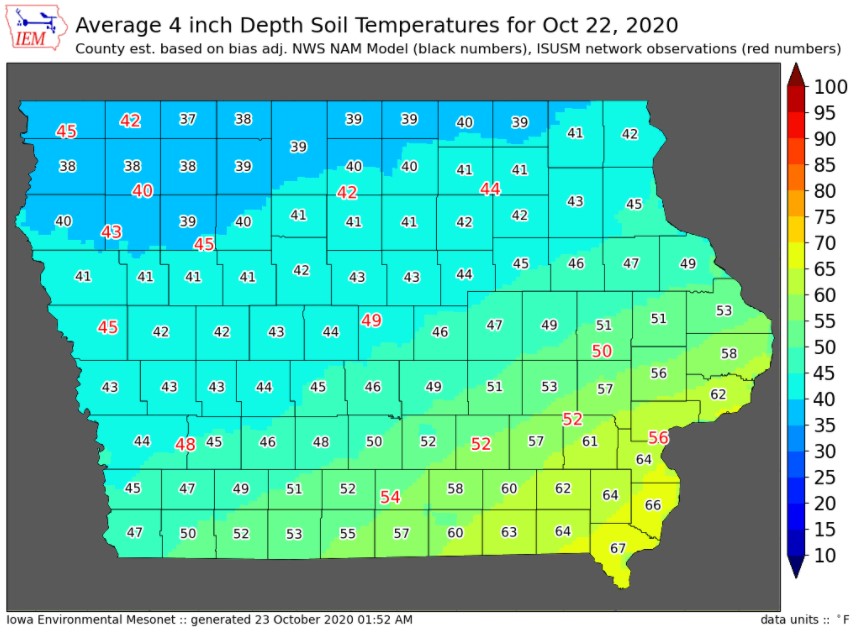October 23rd, 2020
posted
on 10/23/2020
in
Weekly Newsletter

October 23rd, 2020
Andrew Blomme
After several weeks of optimal harvesting conditions, Mother Nature put a halt to that this past week. This week's newsletter covers upcoming weather, field conditions, and hybrid comparisons year to year.
More Moisture on Sunday
We might start and finish the week with snow. Precipitation is expected during the day on Sunday. Temperatures on Sunday trend towards any precipitation coming in the form of snow. NOAA predicts us to receive around 1/4" of moisture on Sunday.

While we will likely have precipitation coming our way on Sunday, once that moves out it looks like we will get back to ideal harvesting conditions for several days.
The cold precipitation that fell this week was helpful in lowering the soil temperature well below 50 degrees. Below is the 4" soil temps for the state of Iowa.

Once field conditions are fit, we will be sending anhydrous ammonia tanks out. There is plenty of moisture in the upper profile of the soil to facilitate anhydrous ammonia application. We expect to take full advantage of a long fall application window.
Lou talked about the upcoming fall anhydrous season in last week's blog. You can read his outlook by following this link: Herbers Seed Blog-October 16, 2020
Hybrid Comparison
2020 and 2019 were two very different years. We can all acknowledge that. As you're looking at your own yield data as well as plot data, you are likely noticing that the hybrids that yielded the best in 2019 are not the same as the ones that were the best in 2020. The past two years have shown the importance of mixing up your hybrid line up for the spring. We can't outguess the weather for 2021. It's important to have a mix of offensive hybrids that perform well in years like 2018 and 2019 as well as more defensive hybrids that excelled in 2020. Creating a line up of hybrids with different attributes provides a way to reduce production risk before the seed is even in the ground.